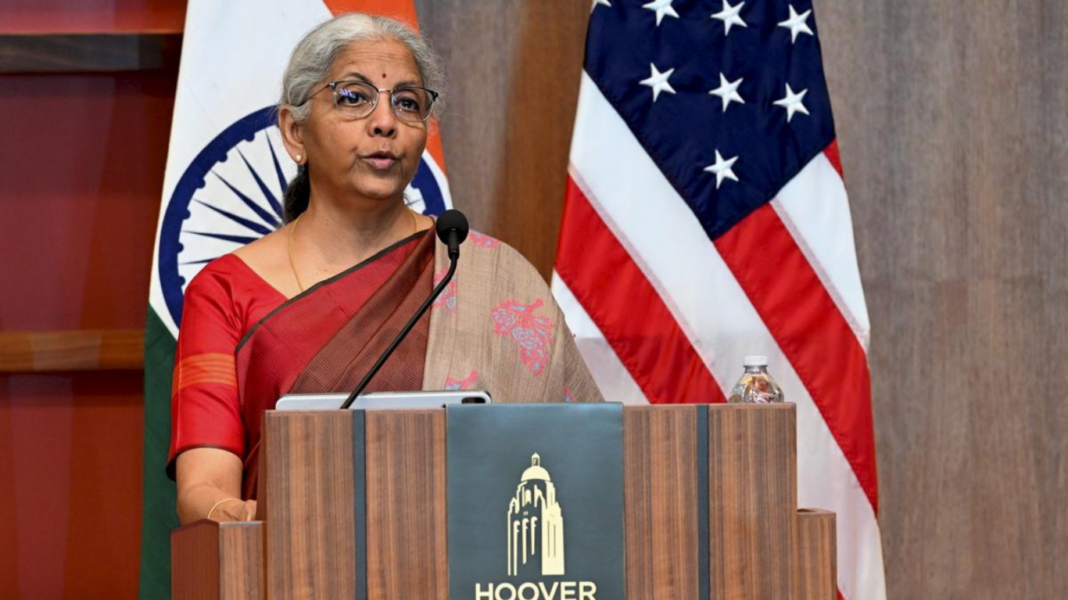
Introduction
India is taking major steps to boost its manufacturing sector, with a strong target of increasing its contribution to the Gross Domestic Product (GDP) from the current 11-12% to 23%, according to Finance Minister Nirmala Sitharaman. This ambitious goal is expected to be achieved with the help of sunrise sectors, new-age industries that are growing rapidly and offering innovative solutions for the future.
In a recent industry event, the Finance Minister emphasized the need to strengthen domestic manufacturing, create more jobs, and reduce dependency on imports. The government believes that improving manufacturing capabilities will not only support economic growth but also make India a global manufacturing hub.
What Are Sunrise Sectors?
Sunrise sectors are emerging industries that are expected to see strong growth in the coming years. These include sectors like:
- Electric vehicles (EVs)
- Semiconductors and electronics
- Green energy and renewable power
- Artificial Intelligence (AI)
- Drones and robotics
- Space technology
These industries are aligned with global trends and sustainability goals. By investing in these sectors, India aims to gain a competitive edge in the international market and attract both domestic and foreign investments.
Government Support for Manufacturing
To achieve this transformation, the Indian government is offering various policy support, including:
- Production-Linked Incentive (PLI) schemes for 14 key sectors
- Ease of doing business reforms
- Infrastructure development under PM Gati Shakti
- Digital India and Skill India initiatives
- Promoting Make in India and Atmanirbhar Bharat (Self-Reliant India) programs
The Finance Minister also stated that India is becoming an investment-friendly destination thanks to better infrastructure, transparency in governance, and consistent economic reforms.
Benefits of Boosting Manufacturing
Increasing the manufacturing share in India’s GDP will bring several advantages:
- Job Creation: Manufacturing provides employment at scale, especially for youth and semi-skilled workers.
- Economic Growth: A stronger industrial base helps accelerate GDP growth.
- Export Potential: Manufactured goods can boost India’s exports.
- Import Reduction: Domestic production reduces reliance on imports, saving foreign exchange.
- Technology Development: New industries promote R&D and innovation.
Manufacturing Growth Linked with Digital Transformation
As the world moves towards Industry 4.0, which combines automation, AI, IoT, and data analytics, India is also aligning its manufacturing vision with digital transformation. Smart factories, predictive maintenance, and digital supply chains are the future of Indian manufacturing.
The integration of technology in manufacturing not only improves productivity but also enhances product quality and reduces waste.
India’s Potential to Become a Global Manufacturing Hub
With its large population, young workforce, and growing domestic market, India is well-positioned to become a major player in global manufacturing. The rising cost of manufacturing in China and the global trend to diversify supply chains are creating opportunities for India.
Key factors favoring India include:
- Competitive labor costs
- Government incentives
- Strategic geographic location
- Strong startup ecosystem
Key Sectors Leading India’s Manufacturing Growth
1. Automobile and EV Sector
India is pushing for the adoption of electric vehicles through incentives, charging infrastructure, and local manufacturing. EV startups and traditional auto companies are investing heavily in this space.
2. Electronics and Semiconductors
India is aiming to become a hub for chip manufacturing and electronics assembly. The government has launched dedicated schemes to attract investment in this critical sector.
3. Green Energy and Clean Tech
With a strong push towards solar and wind energy, green hydrogen, and energy storage solutions, India is building capabilities in renewable energy manufacturing.
4. Defense Manufacturing
India is opening up the defense sector to private companies to boost indigenous defense production, reduce imports, and increase exports.
5. Textiles and Apparel
India’s traditional strength in textiles is being revived with modern techniques and support for exports.
Skill Development and Workforce Readiness
To support this growth, India is investing in skill development programs. Training the youth in technical skills, digital tools, and vocational education is essential for creating a future-ready workforce.
Initiatives like Skill India Mission, Industrial Training Institutes (ITIs), and partnerships with private companies aim to bridge the skill gap.
Global Collaborations and Investments
India is actively partnering with global players to bring advanced technology and capital into the country. Joint ventures, FDI, and global supply chain collaborations are part of India’s strategy to grow its manufacturing ecosystem.
Challenges Ahead
Despite the positive outlook, India faces certain challenges in achieving this target:
- Infrastructure bottlenecks
- Regulatory complexities
- Need for more R&D investment
- Global competition
However, with consistent reforms and focused efforts, these hurdles can be overcome.
Conclusion
India’s vision to double its manufacturing share in GDP to 23% is bold but achievable. With the backing of sunrise sectors, strong policy support, and a growing talent base, the country is setting the stage for a manufacturing-led economic revival.
By becoming a global manufacturing hub, India can secure its place in the new world economy, generate millions of jobs, and ensure sustainable and inclusive growth.































